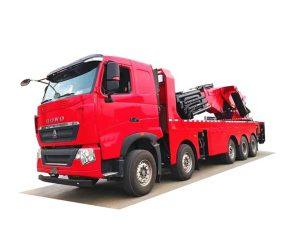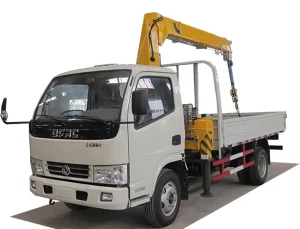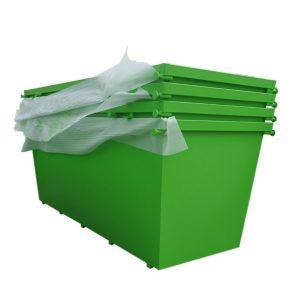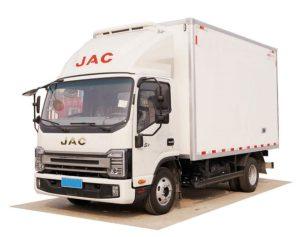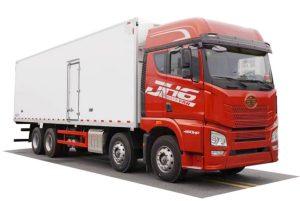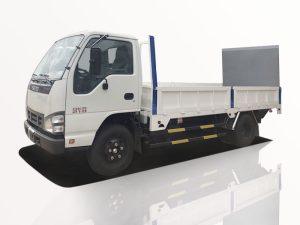Monday to Saturday - 8:00 -17:30
Tow Truck Hydraulic Winch: Everything You Need to Know
Introduction
A tow truck hydraulic winch plays a vital role in the towing industry, providing the necessary power to assist in moving vehicles that are stuck or disabled. Understanding its functionality, features, types, and safety measures can significantly enhance your towing operations. In this comprehensive guide, we will explore every aspect of tow truck hydraulic winches, from their basic components to their best practices for use. This article aims to equip tow truck operators, enthusiasts, and anyone interested in the towing business with detailed knowledge about this essential equipment.
What is a Tow Truck Hydraulic Winch?
A tow truck hydraulic winch is a mechanical device used in towing trucks to lift, pull, or drag heavy vehicles. This winch employs hydraulic power to generate strong pulling force, making it ideal for recovering damaged or disabled vehicles from various terrains. Hydraulic winches are preferred over electric alternatives due to their superior power and efficiency.
How Does a Hydraulic Winch Work?
A hydraulic winch operates by using hydraulic fluid to create mechanical power. When the operator activates the winch, hydraulic fluid is directed into a cylinder, causing a piston to move. This movement turns a drum wrapped in a strong cable, pulling or lifting a vehicle. The amount of pulling force generated can vary based on the size of the hydraulic winch and the hydraulic system’s specifications.
Key Components of a Hydraulic Winch
- Drum: The cylindrical component that holds the winch cable or rope.
- Motor: Often linked to the hydraulic system, it turns to operate the winch.
- Cable/Rope: The durable line used to pull or lift the vehicle.
- Hydraulic Pump: Supplies hydraulic fluid to create the necessary pressure for winching.
- Control Valve: Used to regulate the flow of hydraulic fluid to control the winch’s operation.
Types of Hydraulic Winches
There are several types of hydraulic winches used in tow trucks, each serving different purposes and capacities.
1. Single-Line Winches
Single-line winches are often lighter and simpler in design. They pull directly from the drum without any mechanical advantage, making them suitable for light-duty towing and pulling tasks.
2. Double-Line Winches
These winches use a system of pulleys to create a mechanical advantage, allowing for greater pulling power with less strain on the winch. This is ideal for heavier vehicles and more challenging recovery situations.
3. Planetary Winches
Planetary winches utilize a series of gears and a planetary gear system, offering enhanced speed and high pulling capacity. They are commonly found in commercial towing operations where power is crucial.
4. Industrial Winches
Industrial hydraulic winches are built for heavy lifting and robust tasks such as construction and forestry. While not typical for standard tow trucks, they can be adapted for specialized towing needs.
Benefits of Using a Hydraulic Winch
Hydraulic winches offer numerous advantages that make them a preferred choice for tow truck operators:
1. High Power Output
Hydraulic systems can generate substantial torque, allowing for heavier loads to be lifted or pulled compared to electric winches.
2. Durability
Hydraulic winches are often built to withstand harsh environments and extended use, resulting in a longer lifespan with minimal maintenance.
3. Instant Response
The immediate response of hydraulic systems provides operators with quick power control during critical towing tasks, improving overall efficiency.
4. Versatility
These winches are suitable for various applications beyond towing, including lifting equipment and performing recovery operations in diverse terrains.
Choosing the Right Tow Truck Hydraulic Winch
Selecting the right hydraulic winch involves understanding multiple factors that will influence your towing operations.
1. Load Capacity
Before purchasing, calculate the maximum load capacity you anticipate pulling. This ensures you choose a winch that can handle those weights safely.
| Winch Type | Maximum Load Capacity |
|——————|———————–|
| Single-Line Winch| Up to 5,000 lbs |
| Double-Line Winch| Up to 10,000 lbs |
| Planetary Winch | Up to 25,000 lbs |
| Industrial Winch | Over 25,000 lbs |
2. Winch Size and Weight
Consider the size and weight of the winch and how it will affect your vehicle’s performance. A heavier winch can affect your towing truck’s payload capacity.
3. Power Source
Ensure that your tow truck’s hydraulic system is compatible with the winch model you choose. Check the flow rate and pressure specifications required for optimal performance.
4. Cable Type
Opt for steel cables for durability or synthetic ropes for lightweight applications. Each type has its pros and cons based on the terrain and usage.
Installation Process of a Hydraulic Winch
Installing a hydraulic winch correctly is crucial for ensuring optimal performance and safety.
Step-by-Step Installation Guide
- Gather Required Tools: Assemble necessary tools such as wrenches, sockets, and hydraulic fittings.
- Attach the Winch: Secure the hydraulic winch onto the tow truck’s mounting plate following the manufacturer’s instructions.
- Connect Hydraulic Lines: Properly connect hydraulic lines from the tow truck’s system to the winch, ensuring a leak-free connection.
- Install Control Controls: Mount the control valve and ensure that it’s easily accessible during operations.
- Wire the Winch Motor: Set up electrical connections if needed, following safety standards to avoid shorts.
- Test the System: Perform a comprehensive test to ensure everything functions correctly before heading into the field.
Operating a Tow Truck Hydraulic Winch Safely
Operating a hydraulic winch requires adherence to safety protocols to protect operators and bystanders.
Pre-Operation Checks
- Inspect the winch and hydraulic lines for damage or wear.
- Ensure the winch cable is not frayed or kinked.
- Verify that all controls are functioning correctly.
During Operation
- Always use the winch within its load capacity.
- Keep bystanders at a safe distance while operating the winch.
- Use proper hand signals or communication devices to indicate movements.
Post-Operation Maintenance
Regular maintenance extends the life of your hydraulic winch and ensures ongoing reliability:
- Regularly check hydraulic fluid levels and top up as necessary.
- Lubricate the cable and drum to prevent corrosion and wear.
- Store the winch in a clean, dry place when not in use.
Common Issues and Troubleshooting
As with any machinery, issues may arise during the operation of tow truck hydraulic winches. Here are some common problems and their solutions.
1. Winch Does Not Operate
This could indicate a hydraulic fluid issue, electrical connection failure, or a malfunctioning control valve. Check fluid levels and connections first.
2. Slow Operation
Slow winch operation might suggest low hydraulic pressure due to leaks or blocked filters. Inspect the system for leaks and clean or replace filters as needed.
3. Overheating
Overheating can occur due to extended use without breaks, poor cooling, or fluid contamination. Ensure proper cooling and take regular breaks during heavy work.
Tips for Efficient Use of a Hydraulic Winch
Maximize your winch performance with some practical tips:
1. Use Proper Rigging Techniques
Ensure safe load distribution by using appropriate rigging techniques such as slings and shackles to connect the load securely.
2. Practice Regular Maintenance
Nothing beats preventative maintenance. Regular inspections and servicing checks ensure reliability and efficiency.
3. Train Operators Thoroughly
Proper operator training enhances safety and operational efficiency. Make sure any individual using the winch is familiar with its functions and safety protocols.
FAQs About Tow Truck Hydraulic Winches
1. How often should I service my hydraulic winch?
It is recommended to service your hydraulic winch every six months or after heavy use to ensure optimal performance.
2. Can I use a hydraulic winch for purposes other than towing?
Yes, hydraulic winches can be used in various applications, including lifting heavy equipment and recovering items in industrial settings.
3. What is the lifespan of a hydraulic winch?
The lifespan varies depending on use and maintenance but can typically last over 10 years with proper care.
4. Are hydraulic winches safe for use?
Yes, hydraulic winches are safe when used properly and according to manufacturer guidelines. Regular maintenance and operator training further enhance safety.
5. Can I install a hydraulic winch on any tow truck?
Not all tow trucks are compatible with every hydraulic winch model. Ensure to select a winch that matches your truck’s specifications and hydraulic capabilities.
6. What should I do if my hydraulic winch fails?
If your hydraulic winch fails, stop use immediately and inspect the system. Consult a professional if you are unable to identify or fix the issue yourself.



